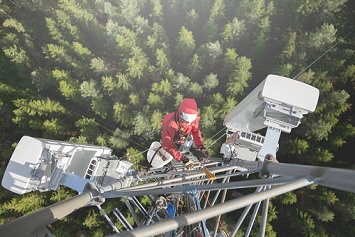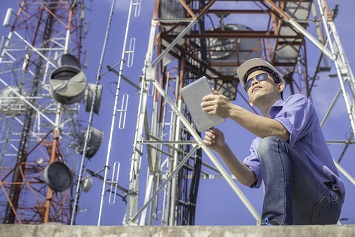Who is responsible for the safety of employees who work on communication towers? The “employer” is the obvious answer, but the construction, maintenance, and repair of communication towers has evolved in ways that have created chains of employers, from tower owners to operators to contractors to layers of subcontractors.
The consequence is that there can be so many employers that some may not even know the identity of the others. In such situations, there can be erroneous assumptions by an employer(s) that worker safety measures are being carried out by another entity on the employer chain.
Depending on their role at the worksite, multiple employers may or may not be cited if a worker safety violation occurs (see OSHA’s Multi-Employer Citation Policy). But regardless of who bears the majority of legal liability, no member of the employer chain is exempt from the responsibility to ensure worker safety on what has been called one of the most dangerous jobs in the construction industry.
In a guidance document, OSHA and the Federal Communications Commission (FCC) describe the complexities of employer responsibility at communication tower worksites and how critical safety issues should be addressed.
A Complicated Relationship
“When carriers own their own towers and directly employ the employees who build and maintain the towers and the equipment on them, the carriers have the ability and incentive to ensure safe practices,” state OSHA/FCC.
Typically, however, the relationship between carriers and tower employees is more complicated. For example:
- Towers are often owned by separate corporations (not carriers, generally) and are built by contractors.
- Carriers often contract with turfing vendors for the installation and maintenance of equipment on towers.
- Turfing vendors, in turn, may hire other contractors to perform work.
- These contractors may subcontract tower work to still smaller employers.
“As a result, carriers and tower owners may not know who is performing work for them, or when work is being performed,” state OSHA/FCC. “Thus, responsibility for employee safety is fractured into many layers. Instead of a single company having control and responsibility for employee safety and tower integrity, employer responsibilities can be spread over numerous small employers.”
Workshop Recommendations
The guidance document, Communication Tower Best Practices, is based on workshops OSHA and the FCC conducted in 2014 and 2016; the first covered critical safety issues workers faced, and the second covered best practices. The guidance summarizes the responsibilities of both communication tower worksite employers and employees, including establishment of a comprehensive safety program describing management leadership, employee participation, hazard identification and assessment, hazard prevention and control, education and training, and program evaluation and improvement. Also discussed is communication on multiemployer workplaces.
“Host and contract employers coordinate on work planning and scheduling to identify and resolve any conflicts that could impact safety or health,” state OSHA/FCC. The following specific recommendations are made:
- To maximize effectiveness, coordination of safety and health programs along the contracting chain should be managed by a designated person (for example, a chief safety officer) to ensure clear lines of responsibility and accountability.
- This designated person will ideally have some personal experience climbing and working on towers or have a close advisor who has such experience.
- The program should clearly delineate the roles and responsibilities of each party in the contracting chain for employee safety and health. Abiding by these roles and responsibilities should be a condition of awarding contracts.
- The safety and health program should establish concrete consequences for contractors that do not take appropriate steps to ensure the safety of their employees. In some instances, termination of the contract may be an appropriate consequence.
Verification
Each contractor should have a process to verify that lower-level subcontractors have comprehensive safety programs in place. The verification process should include:
- Clear criteria for vetting and approving all contractors (including subcontractors) and verification that all contractors are subject to the same vetting criteria;
- Procedures for obtaining (or requiring contractors to maintain) certification and training records for each climber on-site;
- Procedures for obtaining written approval for any subcontracting;
- Procedures providing for the ongoing monitoring and evaluation of contractor safety records, including OSHA records;
- Criteria for considering a contractor’s safety record in the awarding of future contracts; and
- Provisions for independent (third-party) audits of jobsites to ensure that the contractors performing work are vetted contractors and that they are performing work using appropriate safety measures.
Turfing Vendors in Pivotal Position
While all entities in the employer chain have major responsibilities, the guidance notes that turfing vendors are in the best position to ensure an open flow of communication between carriers, tower owners, and contractors.
“It is vital that contractors have all relevant information to safely complete work activities,” state OSHA/FCC. “Often contractors encounter safety issues on sites that tower owners and carriers are not aware of, and the responsible parties need to be made aware of these situations. Turfing vendors can ensure that the relevant parties in the contracting chain are exchanging necessary information.”


